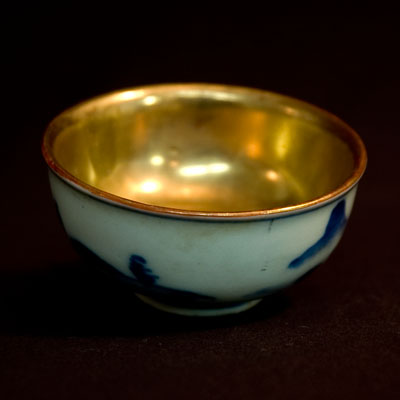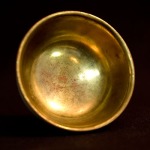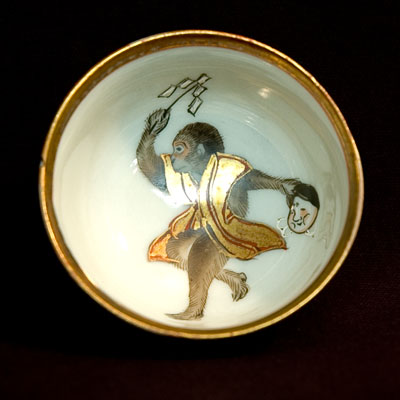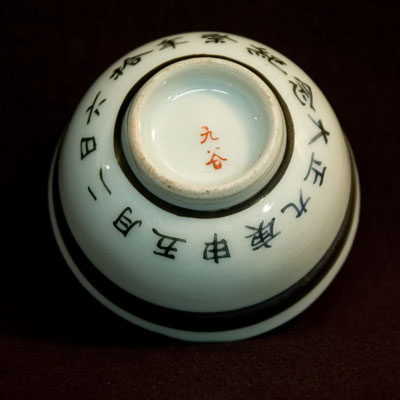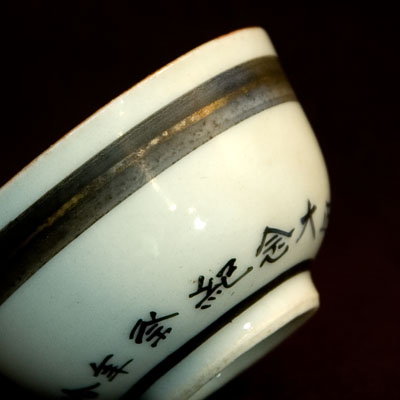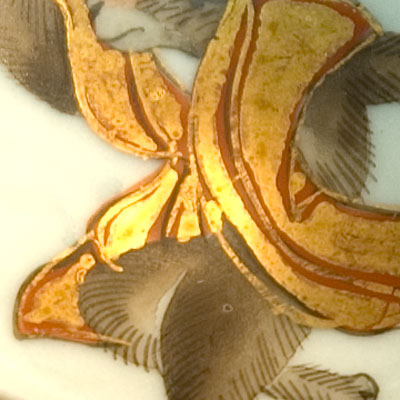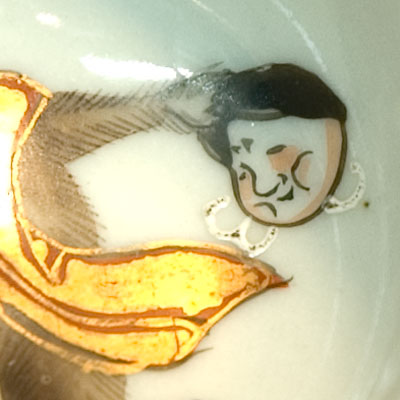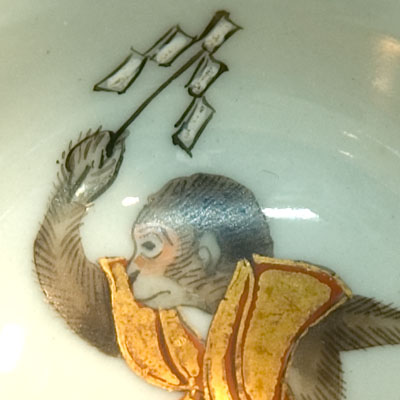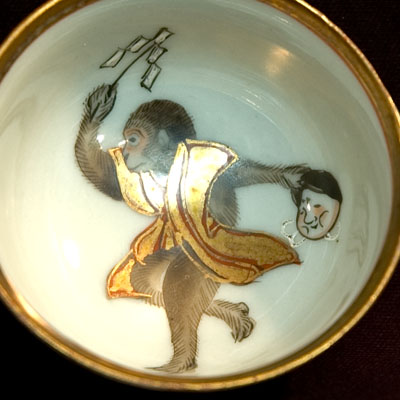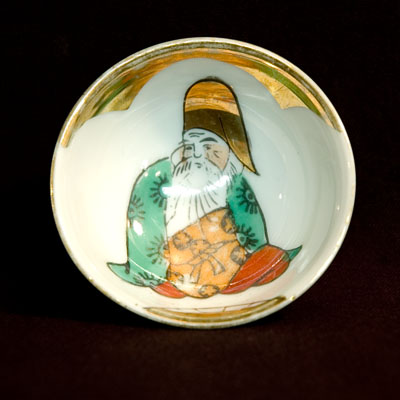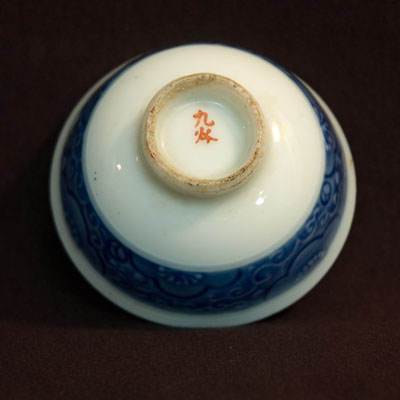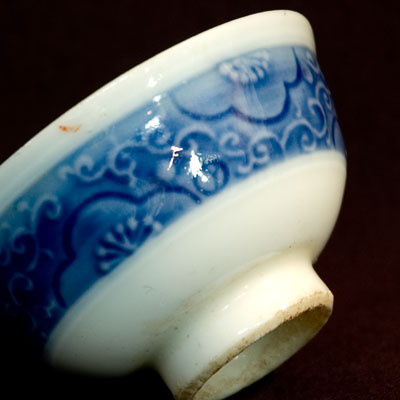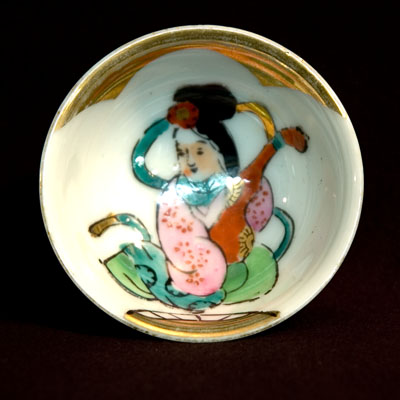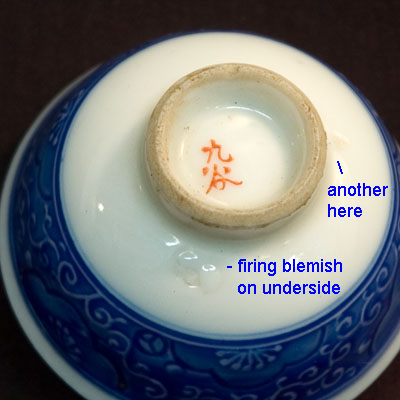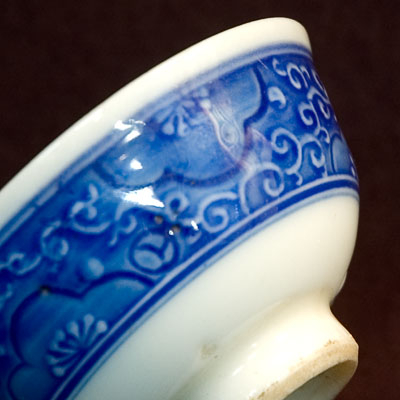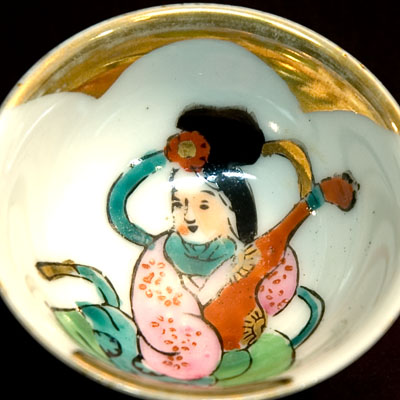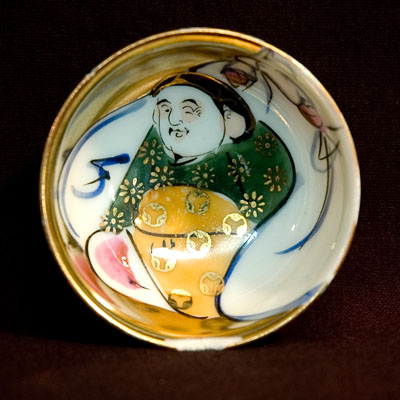
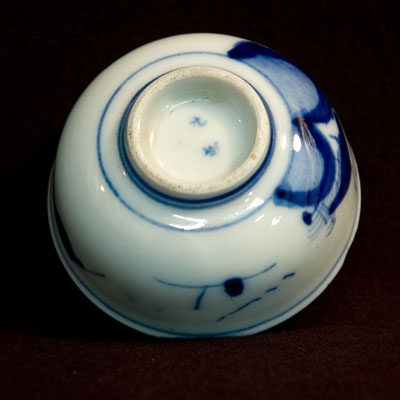
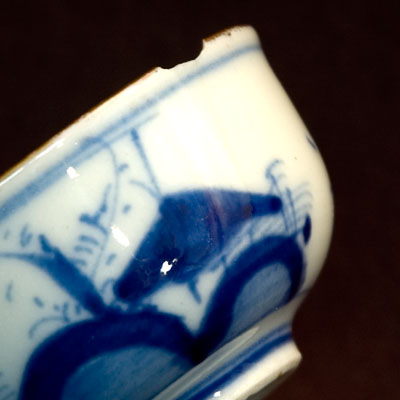
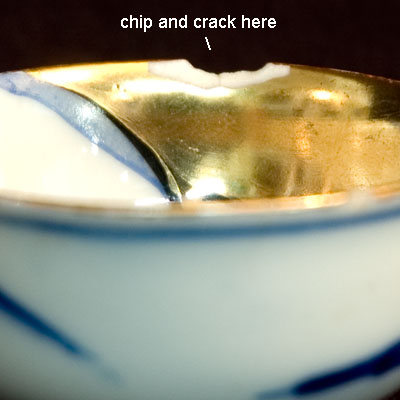
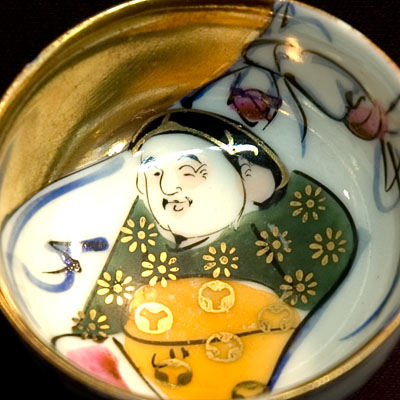
Description
Beautiful Kutani Japanese sake cup (guinomi in Japanese). Kutani-ware has been produced in Japan for over 300 years within remote villages of the ‘nine valleys’ (Kutani means nine valleys) region of Kaga province in Japan’s Ishikawa prefecture (please see map below). Noted for it’s fine brush work and delicate porcelain, Kutani kilns have produced some of Japan’s finest ceramic art through generations of refined production. Though the actual origins of Kutani-ware are uncertain, we know that the kilns of the nine valleys were long supported through the patronage of the powerful Maeda clan who were the hereditary rulers of the region.
About the Listed Item
This splendid Kutani porcelain sake cup decorated with what may be the image of one of Japan’s most famous luck gods, Daikoku (please read below to learn more about Daikoku). The cup includes the Kutani mark visible on the underside of the cup. This sake cup was made during the mid to late Japanese Showa period (1926-1989) and is in fair condition with a single large crack on the lip and a thin crack proceeding down from the crack (this damage is visible and noted in the listing detail photos). The cup also has some minor marks, stains and blemishes from handling and age. The cup was acquired in the beautiful and historic city of Shizuoka, Japan near the foot of Mt. Fuji. Click here to see additional high-quality Kutani ceramic items available for purchase from our eBay store The Old Tokaido or click here to see more sake cups!
Size:
Height: 1.1 inches (2.8 centimeters)
Diameter: 2.1 inches (5.5 centimeters)
Weight: 1.1 ounces (32 grams)
Important note:
Images of the Kutani items we list are often uploaded to our Japanese Kutani Art blog which is an on-line gallery of unique and interesting examples of fine Kutani art. The purpose of this blog is strictly to share images of some of the wonderful Kutani pieces we encounter in the course of our work, and to provide a digital archive to preserve these images into the future. If you purchase a Kutani item from us and do not want a digital copy of your purchase displayed in the photo blog or archive then please simply send us an email indicating your preference and we will promptly remove the image.
Click here to see more Daikoku items!
Click here to see additional sake items!
Click here to see other fine-quality Japanese ceramics!
Click here to see more treasures from Japan!
More about Daikoku
Daikoku is one of the most famous and celebrated gods within the Japanese Shinto (native religion of Japan) pantheon (please read below to learn more about Shinto). Daikoku is one of seven popular luck gods collectively known as Shichifukujin. These famous gods (six male and one female) are frequently seen together in Japanese art, often on a boat sailing the seas of fortune. Daikoku is usually depicted holding his wonderful luck hammer which he waves to dispense good fortune upon worthy humans. The god is also frequently shown standing upon two large bales of rice, an auspicious symbol of prosperity. The happy luck god wears one of the most captivating smiles in all Asian art and is nearly always depicted in the act of joyfully visiting wealth and happiness upon the earth (note the bag of goodies carried over his left shoulder).
More about Japanese sake and sake utensils
Sake has long been an important part of Japanese culture. In the past, sake was considered a very special item, reserved for only the most important occasions, such as weddings, birth celebrations and other auspicious events. Sake was considered a sacred drink, and accordingly the first glass poured was always offered to the gods before the remainder could be shared among the celebrants. Sake can be served either warm or cold and special sake flasks are used to both prepare and dispense this unique Japanese drink. Sake is warmed either by immersing the flask (already filled with sake of course) into warm water until the desired temperature is reached or through the use of a special sake kettle called a choshi. The latter method however, though common in old Japan, is today usually reserved for ceremonial events only. Over time, sake utensils, such as cups have developed their own ritual significance which is still evident in modern Japan. For example, it is today common at Japanese engagement parties for the man and woman to exchange sake cups as a sign of their mutual intent to marry. Very beautiful sake cups are also given away to celebrate the birth of a child, as these cherished items are considered symbolic of the significance of the new parent-child relationship. Though normally small in size, sake cups and flasks have long been used in Japan as a medium for the expression of art and calligraphy. Hand-painted cups and flasks are highly collectable both within and outside Japan and are eagerly sought after by collectors who value their utilitarian nature and artistic splendor.
item code: R3S6B1R6-0004026
category code: SAKECUP
ship code: L2160
Leave a Comment
Posted in Antique, Bar, Ceramic, Cup, Guinomi, Izakaya, Japan, Japanese, Kurt Bell, Kutani, Mingei, Nihon, Nippon, Old, Porcelain, Sake, Sake Cup, Showa, Softypapa, The Old Tokaido, Tokaido, Vintage | Tags: Cup, Guinomi, Japan, Japanese, Kutani, Nihon, Nippon, Porcelain, Sake, Sake Cup, Softypapa, Tokaido






